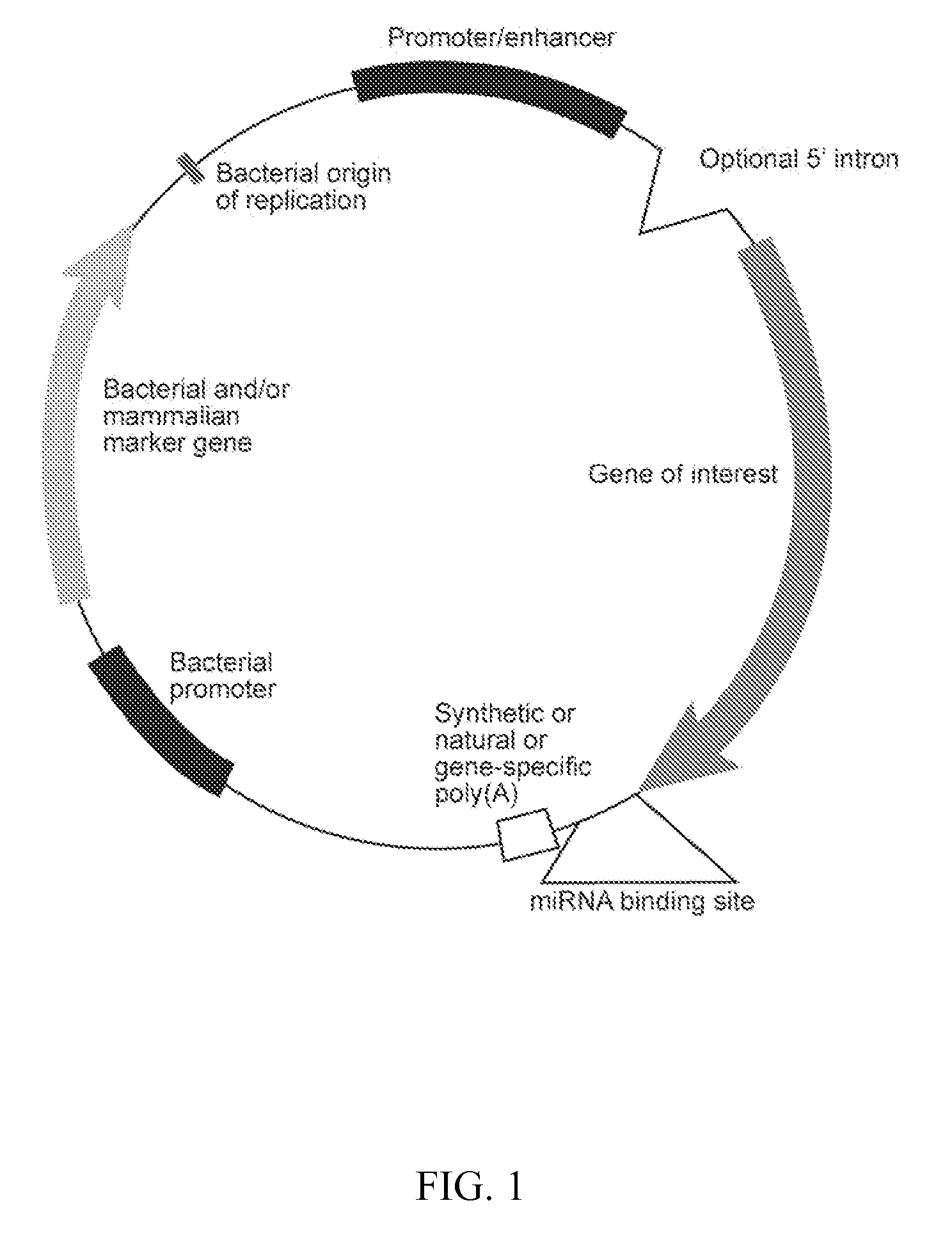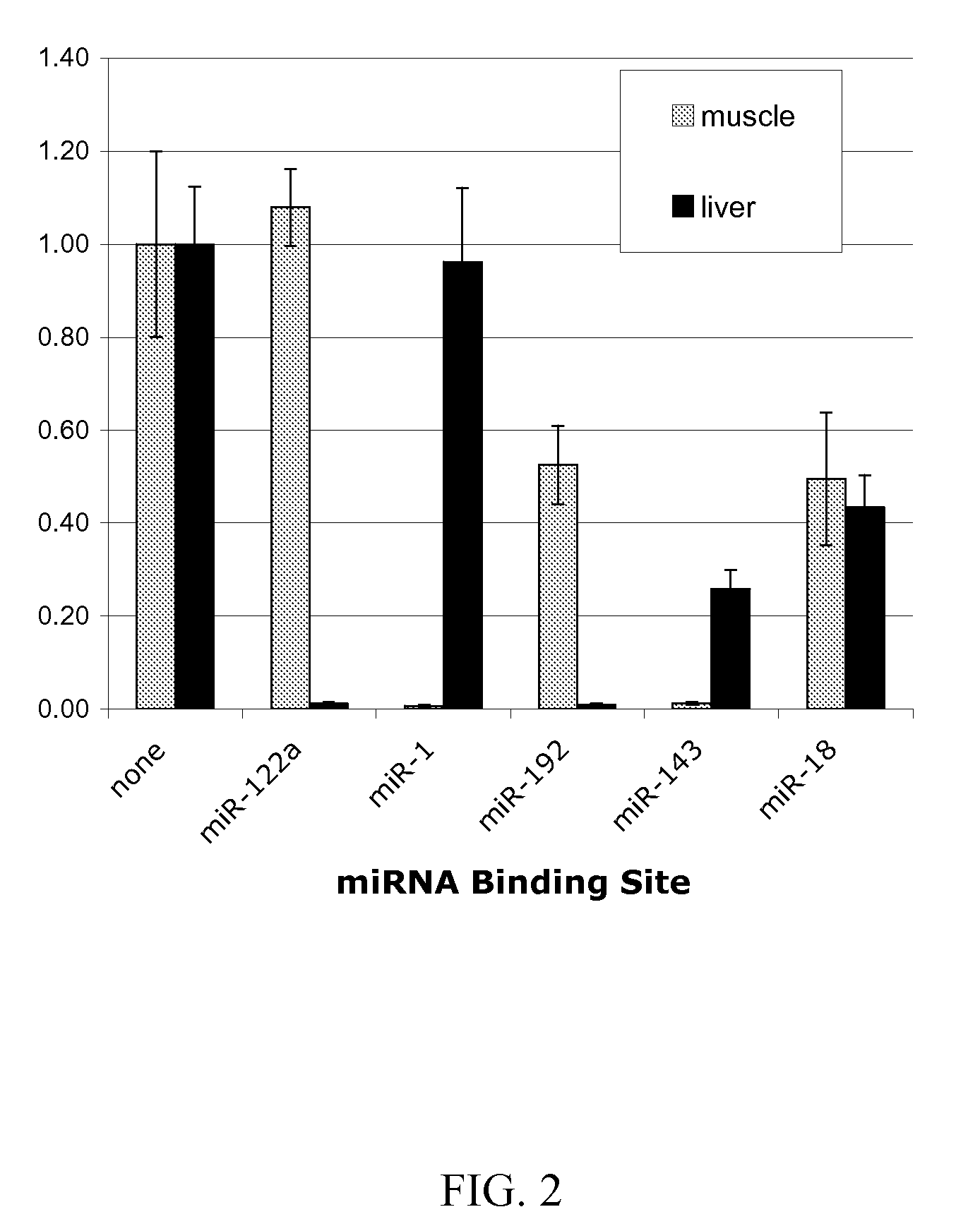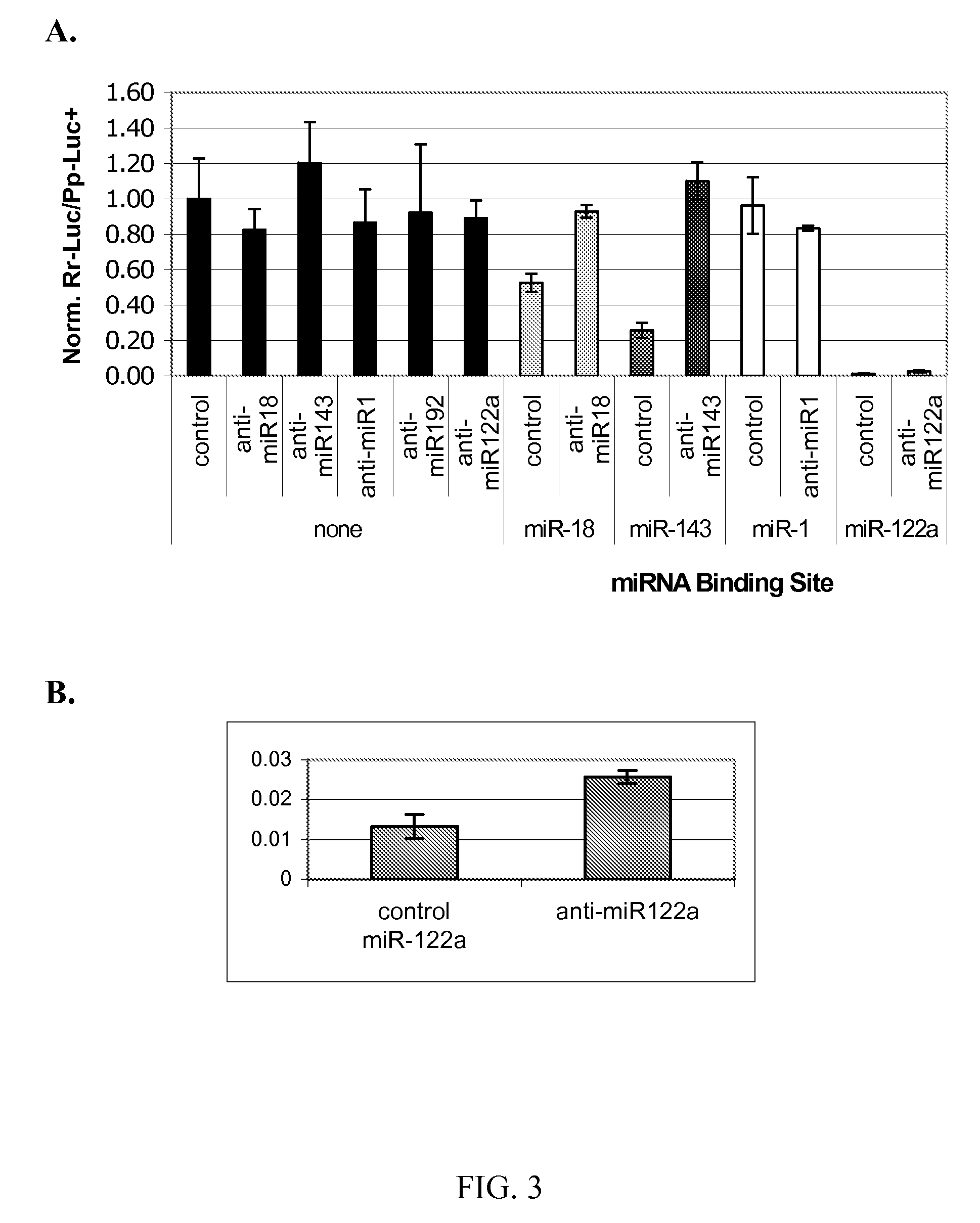Regulatable or conditional expression systems
a technology of conditional expression and gene regulation, applied in the field of gene regulation or conditional expression system, can solve problems such as ideal use in animals, and achieve the effect of suppressing gene expression
- Summary
- Abstract
- Description
- Claims
- Application Information
AI Technical Summary
Benefits of technology
Problems solved by technology
Method used
Image
Examples
example 1
[0050] Tissue-specific miRNA-mediated expression cassette. In order to demonstrate that miRNAs can be used to suppress transgene expression in cells in vivo, a plasmid was made that contained an expression cassette encoding a reporter gene and a various miRNA binding sites. The test the expression system, a modified PSICHECK™-2 vector (Promega, Madison, Wis.) was used. This commercially available plasmid encodes both the Renilla and firefly luciferase genes and was originally developed for use in determining the activity of candidate siRNAs. For in vivo studies, the Renilla luciferase gene acts as the gene of interest while the firefly luciferase gene served as an internal control that permitted normalization of delivery efficiency.
[0051] Various perfect miRNA binding sites were inserted into XhoI / NotI sites in the 3′ UTR of the Renilla luciferase gene. The miRNA binding sites were selected to bind with miRNAs known to be expressed in muscle and liver target tissues. Sequences of m...
example 2
[0052] Tissue specific miRNA-mediated gene suppression of a transgene in muscle and liver in vivo. Expression cassettes were delivered to mouse liver and muscle cells in vivo via hydrodynamic injection (U.S. Pat. No. 6,627,616 and US-2004-0242528). Five miRNA regulated Renilla luciferase expression cassette constructs were delivered separately to liver or limb skeletal muscle cells and monitored for transgene expression. Included were expression cassettes containing the liver specific miRNA-122a mRNA binding site and the muscle-specific miR-1 miRNA binding site. For delivery to liver, 10 μg of plasmid was injected. Livers were harvested one day after injection. For delivery to skeletal muscle, 20 μg of plasmid was injected and muscle from the injected limb was harvested two days after injection.
[0053] After harvest and homogenization, tissue extracts were assayed for both the Renilla luciferase and firefly luciferase activity. Activity of Renilla luciferase was divided by the activ...
example 3
[0054] Inhibition of miRNA-mediated transgene suppression. MiRNA inhibitors can be used to inhibit miRNA activity and to relieve suppression of transgene expression at desired times.
[0055] A. Inhibition of miRNA function in liver using 2′-OMe substituted antisense oligonucleotides. Studies have shown that miRNAs can be inhibited by oligonucleotides containing 2′-O-methyl (2′-OMe) substitutions having the antisense sequence to the mature miRNA (Alvarez-Garcia et al. 2005, Chen et al. 2006). Inhibition was shown to be due to stoichiometric binding to the miRNA. In order to test the ability of antisense to relieve the miRNA suppression of transgene expression in vivo, 10 μg of plasmid containing expression cassettes with the binding sites for either miRNA-18, 143, or 122a were co-delivered to liver by hydrodynamic tail vein injection with 10 μg of the indicated 2′-O-methyl (2′-OMe) antisense oligonucleotides or a non-specific antisense control. Controls also included delivery of miRNA...
PUM
| Property | Measurement | Unit |
|---|---|---|
| length | aaaaa | aaaaa |
| fluorescent | aaaaa | aaaaa |
| heat | aaaaa | aaaaa |
Abstract
Description
Claims
Application Information
 Login to View More
Login to View More - R&D
- Intellectual Property
- Life Sciences
- Materials
- Tech Scout
- Unparalleled Data Quality
- Higher Quality Content
- 60% Fewer Hallucinations
Browse by: Latest US Patents, China's latest patents, Technical Efficacy Thesaurus, Application Domain, Technology Topic, Popular Technical Reports.
© 2025 PatSnap. All rights reserved.Legal|Privacy policy|Modern Slavery Act Transparency Statement|Sitemap|About US| Contact US: help@patsnap.com



